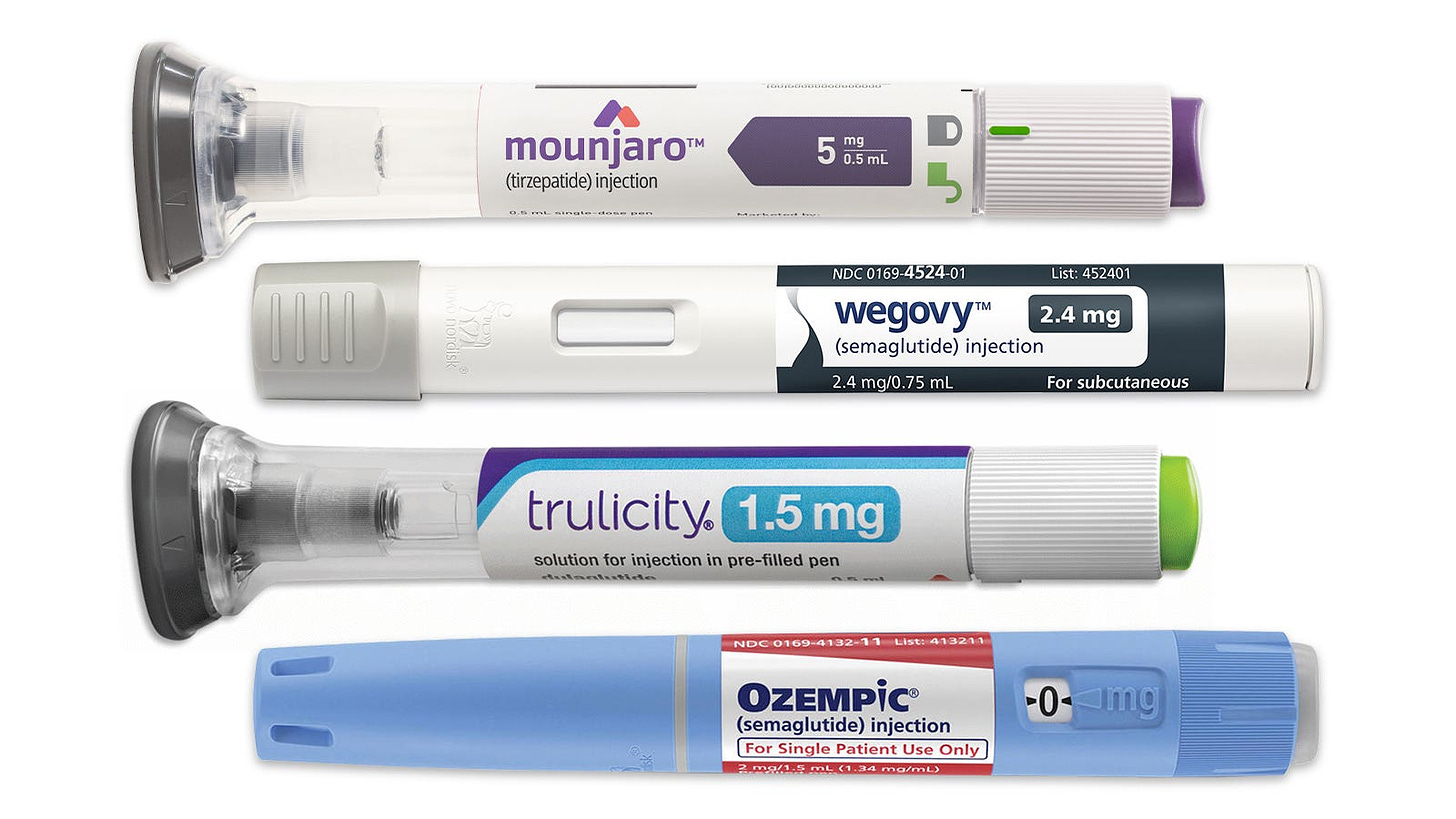Two charts that highlight the future of GLP-1s after Diabetes and Obesity
I analyze the clinical trial landscape for GLP-1s to paint a picture of how omnipresent GLP-1s may end up being in our lives in the near future
Welcome back reader! This week we are discussing the soon-to-be biggest class of medicines in the world, GLP-1 agonists (e.g. Ozempic, Wegovy, Mounjaro). These drugs have taken the world by storm with their ability to cause massive weight loss, unlike any pharmacologic intervention in the past.
While much of the mainstream storylines have focused on their use in Obesity, it is through these initial studies in Obesity and Type 2 Diabetes (T2D) that we’ve learned about potential benefits in other diseases as well. People close the GLP-1 story will remember that the move into Obesity was a result of meaningful weight loss being seen in patients treated for T2D. This effect becomes more likely as researchers learn more about the mechanism of action of a drug and how widespread its effects are in the body.
Early signals are starting to creep out about second and third order learnings from the first wave of GLP-1 studies that indicate their use cases may be much broader than we initially thought. You’ve likely heard about early evidence of GLP-1 patients curbing addictions and early signals in Alzheimer’s Disease. For a while there it seemed like every week, we were seeing a headline about some new disease that scientists thought GLP-1s could be effective in. This got me thinking about where GLP-1 development dollars are being spent. Which therapeutic areas are companies investing life cycle management effort into? What diseases are looking like they will define the next wave of GLP-1 development, post-obesity? Forecasters are now predicting this market to grow to over $130B by 2030. If we know the answer to these questions, we will get a truer sense of how widespread the use of these medicines may be in the future.
Interested in becoming a BPS sponsor?
A sponsored post is 100% accessible to all subscriber levels and gets your brand, product, or service in front of my audience of BioPharma Industry decision-makers right at the beginning of my next post.
If you are interested in featuring your company, product, or services in my next post as a Big Pharma Sharma sponsor, please reach out at info@bigpharmasharma.com. Click the button below to learn how you can sponsor the next edition of Big Pharma Sharma.
Below I dug through clinical trial and competitive landscape data to get at an answer. This data is predominantly compiled from Citeline, so some of the quirks about how specific diseases or TAs are categorized default to how entries are listed in their database. I focused the data pull on all clinical trials featuring a GLP-1 agonist and excluded studies in Obesity and T2D. When you see the graphs below, I think it does a nice job of providing us with some coordinates as to where GLP-1s are going and how pervasive use of these medicines may be in the next five years.





